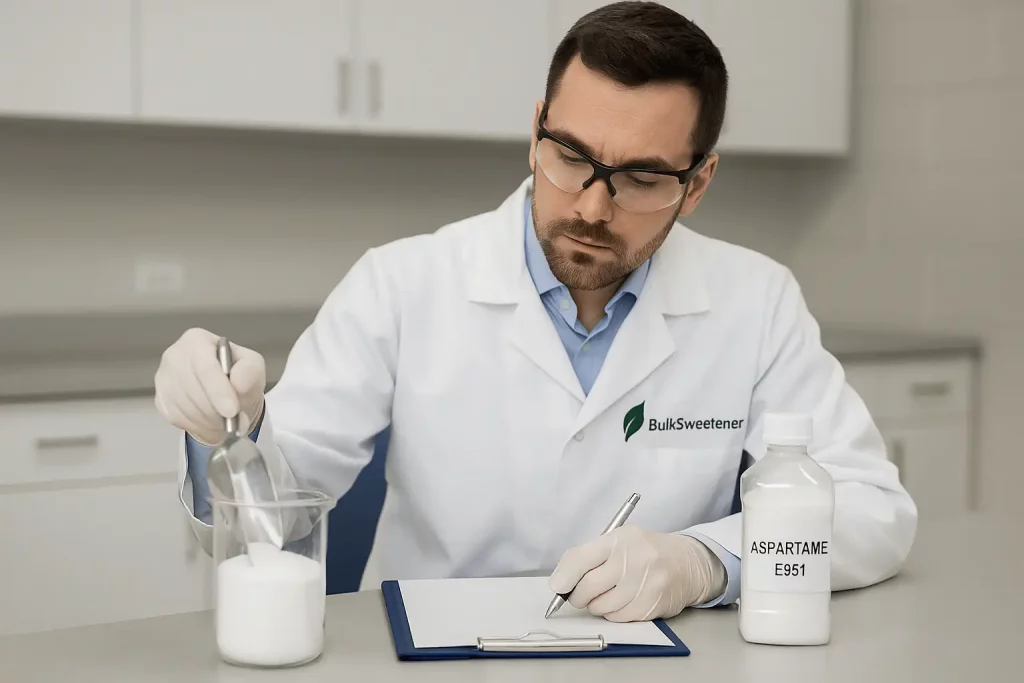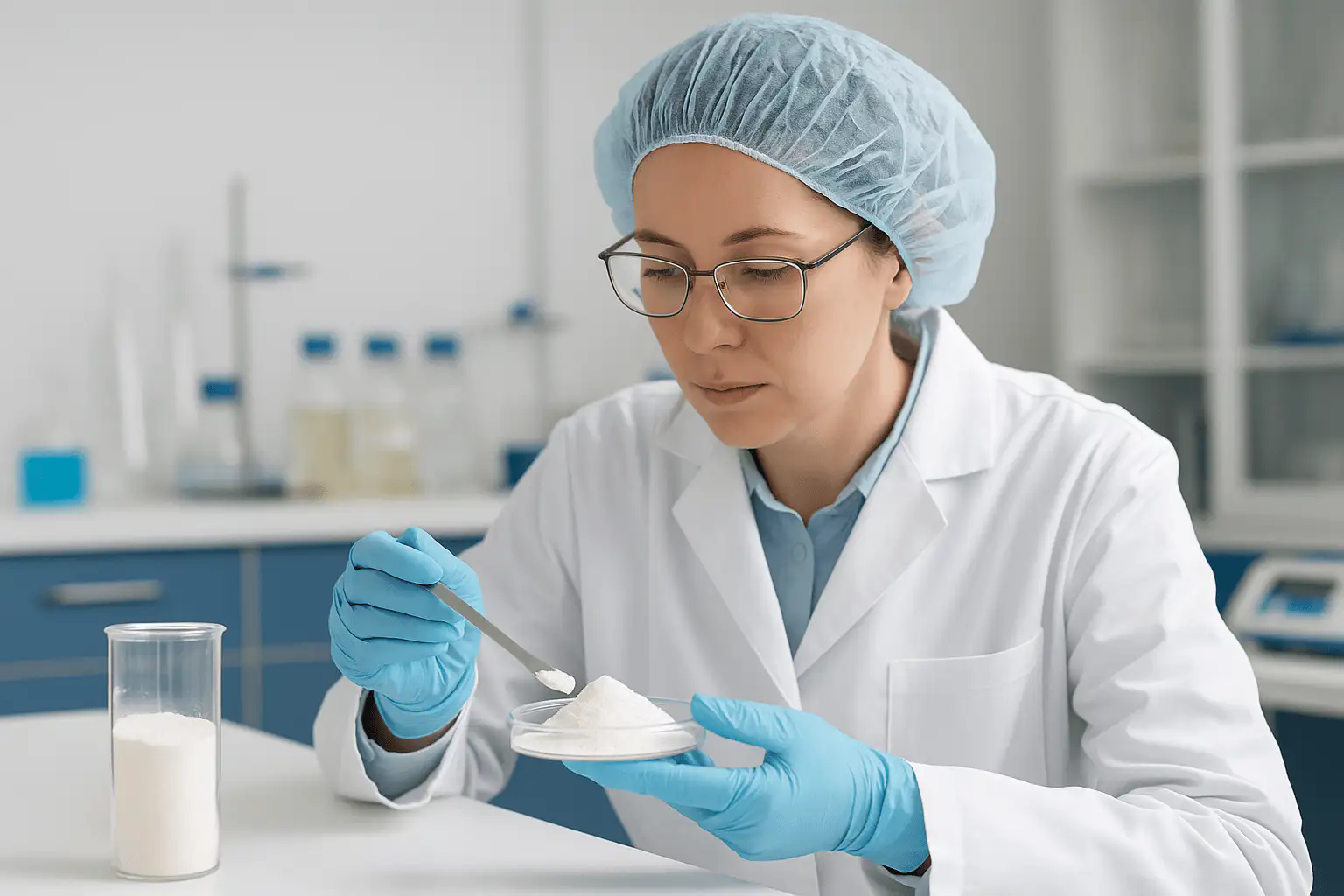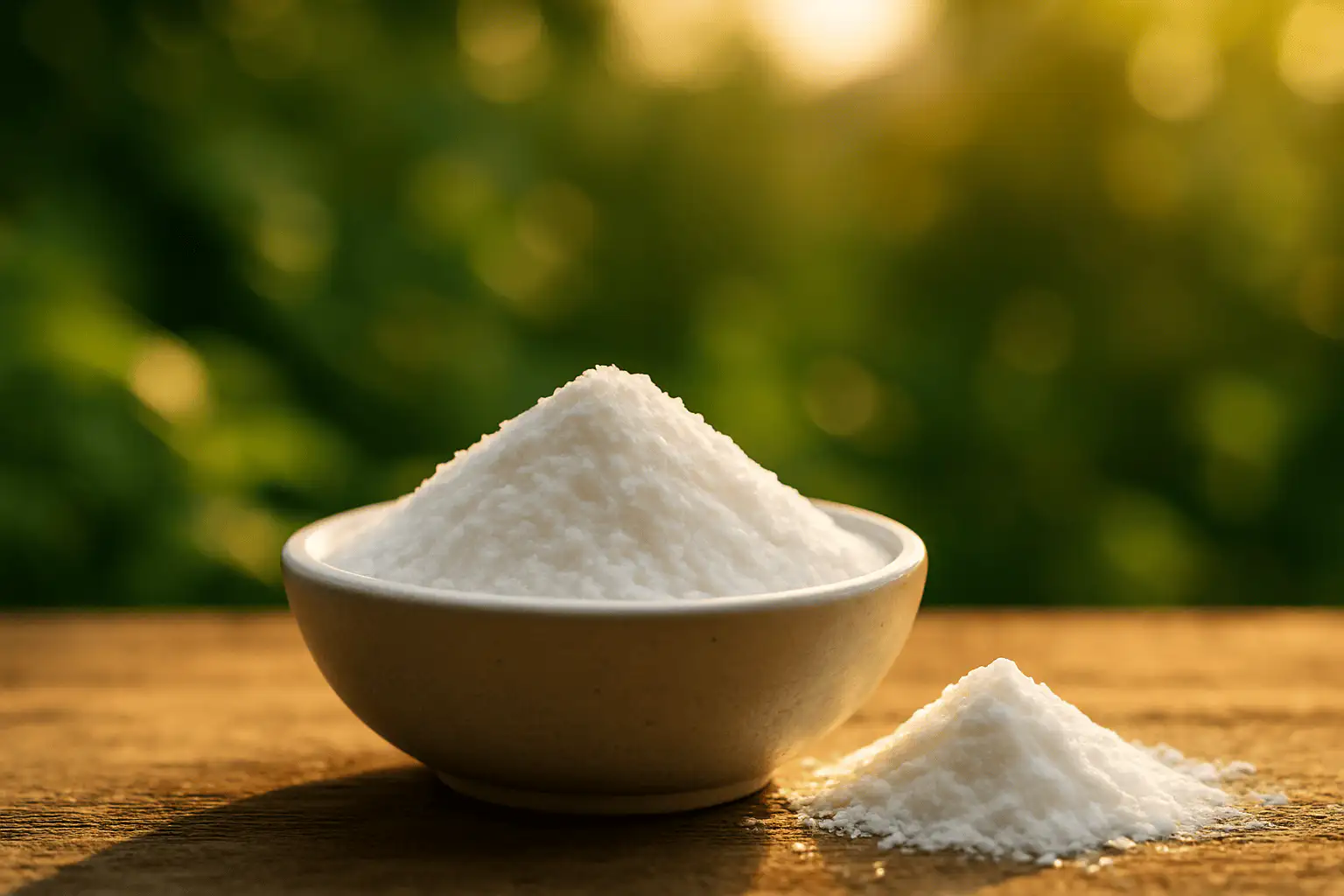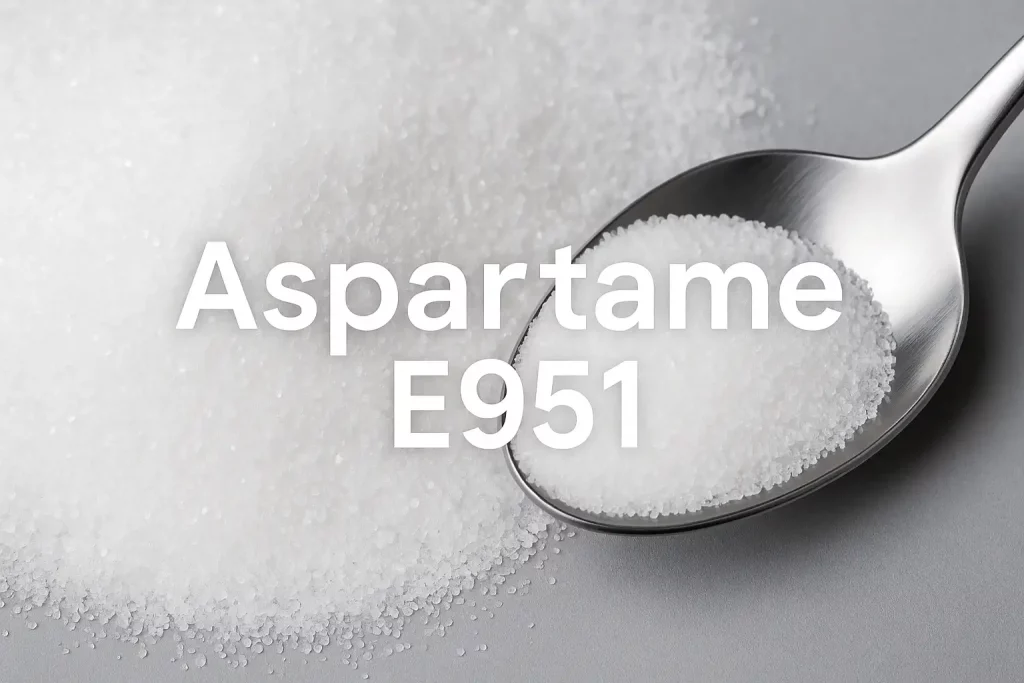Aspartame contains about 4 kcal/g, but because it is ~180–200× sweeter than sugar, usage levels in finished foods and drinks are typically tens of milligrams per serving, contributing negligible calories and carbohydrates (often rounding to 0 on labels, per local rules). When formulating with bulk aspartame (E951/e951), verify the final nutrition panel under your market’s regulations; any carriers in blends—not the aspartame itself—are usually what change calorie or carb values.
Bulk aspartame E951 reliable supply and consistent quality
Source bulk aspartame (E951) and acesulfame K and aspartame blends for beverages, confectionery, dairy and tabletop. Food-grade aspartame sweetener with tight PSD, low moisture and clean dissolution. Ask for aspartame products by mesh, documentation (COA/TDS/SDS) and guidance on artificial sweeteners aspartame vs. alternatives. Batch traceability and multi-site consistency.


Formulation Tech Support

Competitive Prices

Natural Taste

Full batch traceability
The risks of buying bulk aspartame without standards
- Off-notes from impure lots
- Irregular sweetness in cold systems
- PSD drift → variable dissolution & dusting
We qualify sources, control PSD via calibrated sieving/milling, and limit moisture to spec. Each aspartame lot is QC-checked (assay/purity, pH, moisture, heavy metals, micro) and released with COA/TDS. Result: predictable sweetness, clean dissolution and fewer reworks.

Key Technical Specifications — Bulk Aspartame (E951)
| Category | Specification | Details |
|---|---|---|
| Chemistry | Assay (Aspartame) | ≥98.0% (Food grade; FCC/USP compliant) |
| Chemical name | L-α-Aspartyl-L-phenylalanine methyl ester | |
| Chemical ID | CAS 22839-47-0 · E951 | |
| Relative sweetness (vs sucrose) | ≈180–200× sweeter than sucrose (depending on matrix) | |
| pH (1% solution) | ~4.5–6.0 | |
| Energy value | ~4 kcal/g (negligible intake due to very low usage levels) | |
| Physical | Appearance | White crystalline powder |
| Odor / Taste | Odorless; clean, sweet taste with slow onset | |
| Loss on drying | ≤4.5% | |
| Residue on ignition (ash) | ≤0.2% | |
| Solubility in water (25 °C) | ~1 g/100 mL; slightly soluble, better in warm water | |
| Stability | Thermal stability | Decomposes above ~120 °C; not suitable for baking |
| pH stability | Stable between pH 3–5; hydrolyzes in high pH or high heat | |
| Light sensitivity | Stable under normal storage; avoid prolonged UV exposure | |
| Shelf life | Typically 3–5 years in sealed, dry conditions | |
| Quality | Allergens | None expected; contains phenylalanine (warning for PKU) |
| GMO status | Non-GMO grades available | |
| Heavy metals | Complies with FCC/EFSA limits (Pb < 1 mg/kg) | |
| Microbiological | Meets food-grade microbial standards (TPC ≤100 CFU/g) | |
| Origin / process | Produced via enzymatic synthesis from L-aspartic acid and L-phenylalanine methyl ester, followed by crystallization and drying | |
| Documents | COA, TDS, MSDS available on request | |
Key Technical Specifications — Bulk Aspartame (E951)
| Category | Specification | Details |
|---|---|---|
| Chemistry | Assay (Aspartame) | ≥98.0% (Food grade; FCC/USP compliant) |
| Chemical name | L-α-Aspartyl-L-phenylalanine methyl ester | |
| Chemical ID | CAS 22839-47-0 · E951 | |
| Relative sweetness (vs sucrose) | ≈180–200× sweeter than sucrose (depending on matrix) | |
| pH (1% solution) | ~4.5–6.0 | |
| Energy value | ~4 kcal/g (negligible intake due to very low usage levels) | |
| Physical | Appearance | White crystalline powder |
| Odor / Taste | Odorless; clean, sweet taste with slow onset | |
| Loss on drying | ≤4.5% | |
| Residue on ignition (ash) | ≤0.2% | |
| Solubility in water (25 °C) | ~1 g/100 mL; slightly soluble, better in warm water | |
| Stability | Thermal stability | Decomposes above ~120 °C; not suitable for baking |
| pH stability | Stable between pH 3–5; hydrolyzes in high pH or high heat | |
| Light sensitivity | Stable under normal storage; avoid prolonged UV exposure | |
| Shelf life | Typically 3–5 years in sealed, dry conditions | |
| Quality | Allergens | None expected; contains phenylalanine (warning for PKU) |
| GMO status | Non-GMO grades available | |
| Heavy metals | Complies with FCC/EFSA limits (Pb < 1 mg/kg) | |
| Microbiological | Meets food-grade microbial standards (TPC ≤100 CFU/g) | |
| Origin / process | Produced via enzymatic synthesis from L-aspartic acid and L-phenylalanine methyl ester, followed by crystallization and drying | |
| Documents | COA, TDS, MSDS available on request | |
Client testimonials and reviews
Bara Ezquerra
At Bara Ezquerra we work with Bulksweetener for bulk aspartame (E951) and the quality is excellent—clean aspartame sweetener profile, no off-notes, and consistent PSD. We pack sticks for HORECA and clients reorder because dissolution is fast. Documentation is clear (COA/TDS and batch traceability), which simplifies audits and forecasting.
Pablo Bara EzquerraCEO
Cacao Delta
After trials, Cacao Delta chose Bulksweetener’s fine-mesh aspartame products. We get ~180–200× sweetness with stable tempering and baking performance, no recrystallization, and clean cocoa notes. For some bars and coatings we use acesulfame K and aspartame to match sugar timing at very low dose and reduce rework.
Enrique CamposCEO
Acasyna
For our jams, Bulksweetener’s aspartame sweetener gives predictable assay, tight moisture, and uniform particles. It sweetens without masking fruit and holds texture after storage. When we need extra roundness, acesulfame K and aspartame blends reach target Brix efficiently with repeatable results across lots.
Gonzalo NoriegaChief Innovation Officer
Oroyes
As a distributor, Oroyes moves bulk aspartame to retail and foodservice with steady demand. Lead times are reliable, specs match, and COA/TDS arrive with every lot. For tabletop and RTD, aspartame products and Ace-K blends deliver strong sweetness at low cost-in-use, so customers reorder regularly.
Antonio Senior Buyer
Frequently Asked Questions — Bulk Aspartame
What sweetness does aspartame sweetener deliver?
Aspartame (EU code E951 / e951) provides about 180–200× the sweetness of sucrose by weight in aqueous systems. Actual perception varies with matrix, pH, temperature, and the presence of other sweeteners or acids.
Is aspartame safe and what is the FDA aspartame status?
Major authorities recognize aspartame as safe within the Acceptable Daily Intake (ADI). Typical ADIs: ~40 mg/kg bw/day (EFSA) and ~50 mg/kg bw/day (FDA). In the U.S., aspartame is approved as a general-purpose sweetener when used according to regulations and GMP.
When should I use acesulfame K and aspartame together?
The combination shows documented sweetness synergy and a more sugar-like time–intensity curve than either alone. It’s widely used in RTD beverages and tabletop to reach targets at lower total dose, while moderating aftertaste.
How does particle size affect bulk aspartame performance?
Particle size (PSD/mesh) influences dissolution and dusting. Finer meshes (roughly ~120–200) hydrate faster in cold fill; slightly coarser meshes can improve flow in dry blends. Always specify target PSD when requesting bulk aspartame.
Is aspartame heat-stable in pasteurization or baking?
Aspartame tolerates short heat treatments (e.g., many pasteurization/UHT conditions) with limited loss. Prolonged heating or very high temperatures can reduce sweetness—baking performance should be validated per recipe. Best function is typically within ~pH 3–7.
What is aspartame made of and how is it produced?
Aspartame is a dipeptide methyl ester of L-aspartic acid and L-phenylalanine. Industrial aspartame products are manufactured via controlled synthesis, followed by purification, crystallization, and sieving to food-grade specs (assay, moisture, PSD, micro).
What storage keeps bulk aspartame in spec?
Store sealed, cool, and dry (commonly <60% RH), away from volatiles and light. Keep on clean pallets and rotate FIFO. Proper storage helps maintain assay, PSD, and flow properties.
What drives aspartame bulk price for industrial buyers?
Key drivers: assay/grade, PSD (mesh), certifications (e.g., Non-GMO, Kosher/Halal), packaging (25-kg vs big-bag), MOQ, Incoterms (EXW/FCA/DAP), destination, and freight/currency. Provide volumes and target mesh for a like-for-like quote on bulk aspartame.
Which applications benefit most from artificial sweeteners—aspartame?
Beverages/RTD & syrups: very low dose, clean profile
Dairy/yogurts: good performance near neutral pH
Confectionery/coatings: consistent sweetness at low inclusion
Tabletop: versatile aspartame products; often blended as acesulfame K and aspartame for sugar-like timing
Does aspartame sweetener add calories or carbs to my product?
5/5 - (1 vote)
